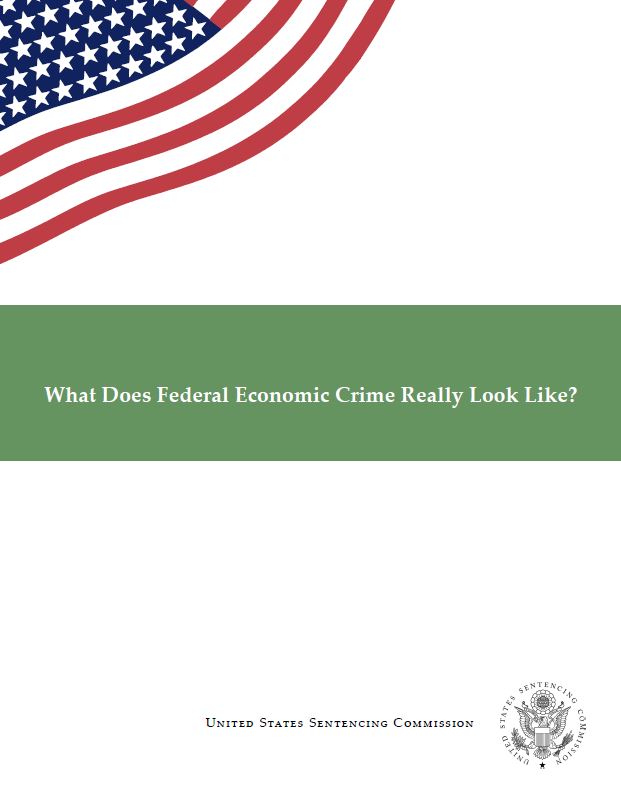Summary

This publication provides, for the first time, data from this new project as well as a brief description of the study's methodology.
Key Findings
- The economic crime guideline (§2B1.1) accounts for approximately ten percent of the federal caseload and encompasses a wide variety of conduct.
- Embezzlement and theft offenders consistently accounted for about one-quarter of all economic crime offenders, ranging from 24.6 to 28.3 percent during the five years studied. Financial institution fraud and government benefits fraud offenders have also been among the top five most prevalent type of economic crime offenders.
- The offense severity, as measured by several guideline enhancements, varied significantly across the 17 specific types of economic crime that were the focus of this report. In particular, median loss amounts varied substantially, with four specific offense types involving median losses far exceeding the median loss amount for all economic crime offenders of $131,750: securities and investment fraud ($2,105,620), health care fraud ($1,086,205), mortgage fraud ($999,721), and government procurement fraud ($739,455) and two specific offense types with the lowest median loss amounts: mail related fraud ($1,815) and false statements ($0). These differences are particularly noteworthy because the loss calculation is the primary driver of the guideline calculation under §2B1.1.
- The application rates of other guideline provisions measuring offense severity and offender culpability also varied significantly across the specific types of economic crime. For example, the victims enhancement applied in 78.1 percent of securities and investment fraud compared to 2.4 percent of false statements offenses, and the sophisticated means enhancement applied in 37.5 percent of advanced fee fraud compared to 0.6 percent of mail related fraud.
- The average sentences varied significantly across the specific types of economic crime. Securities and investment fraud offenders received the longest average sentences at 52 months, more than twice as long as the average sentence for all economic crime offenders of 23 months. False statements offenders received the shortest average sentence at five months.
- Offender characteristics also differed across economic crime types. For example, White offenders accounted for a substantial majority of securities and investment fraud (79.9%), computer related fraud (70.5%), and government procurement fraud (62.3%), while Black offenders accounted for the largest proportion of tax fraud (55.0%), identity theft (49.4%), and credit card fraud (45.0%).
